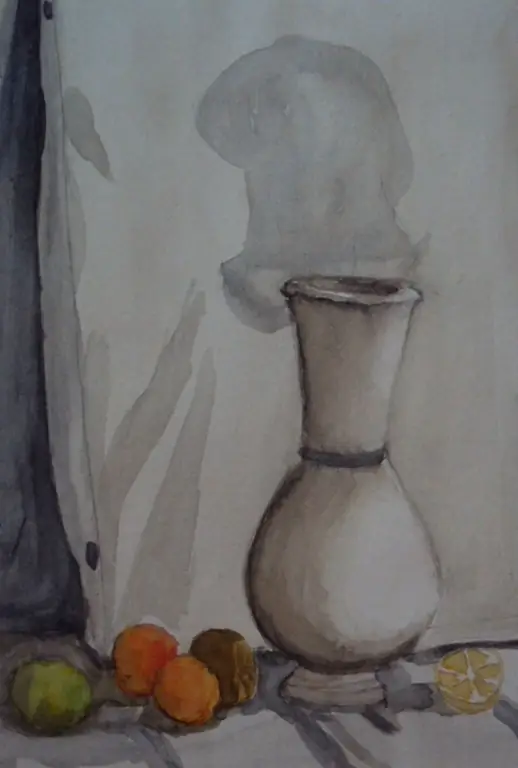In order to learn how to draw a vase, you need to have the skills of building perpendicular lines and a good eye. Knowing the general rules, you can depict a vessel of any shape and proportion.

Instructions
Step 1
Draw a vertical line to represent the axis of symmetry of the vase you are drawing. Use two perpendicular lines to separate the boundaries of the bottom and neck of the vessel. Do not press on the pencil, the guide lines will need to be removed with an eraser.
Step 2
Squint one eye, extend your hand with a pencil in it. Place it horizontally, level with the bottom of the vase, so that the tip matches the left border. You do not need to lean your pencil against the subject of the image. Place your fingernail where the bottom right edge is. Without removing the nail from the conventional point on the pencil, move it to a vertical position, and count how many times the measured area enters the height of the vase. If the proportions of the vessel are such that its height is three times the width of the bottom, mark two points on the lower horizontal line, equally spaced from the vertical, the distance between which is equal to a third of the height. Test yourself with a pencil, measuring all the proportions on the sheet.
Step 3
Using a pencil in your outstretched hand, compare the width of the bottom and the neck. Reflect the ratio of these dimensions in the picture. Select all the curves of the vase, draw auxiliary horizontal lines. To select a point on the vertical axis, use a pencil, pull it out, fix the width of the bottom with your fingernail, and, turning it vertically, calculate at what height, expressed in the size of the bottom, the bend is located. This will help you keep the proportions of the vase.
Step 4
Draw ovals through the points marked on the horizontal lines. Remember that the ovals in the lower parts of the vase are wider than those in the upper horizontal lines. Connect all points with smooth lines. Observe areas of concavity and convexity. Erase the extra construction lines. In the drawing, the side contours of the vase, the oval of the neck and the bottom should remain. Color in the drawing.






